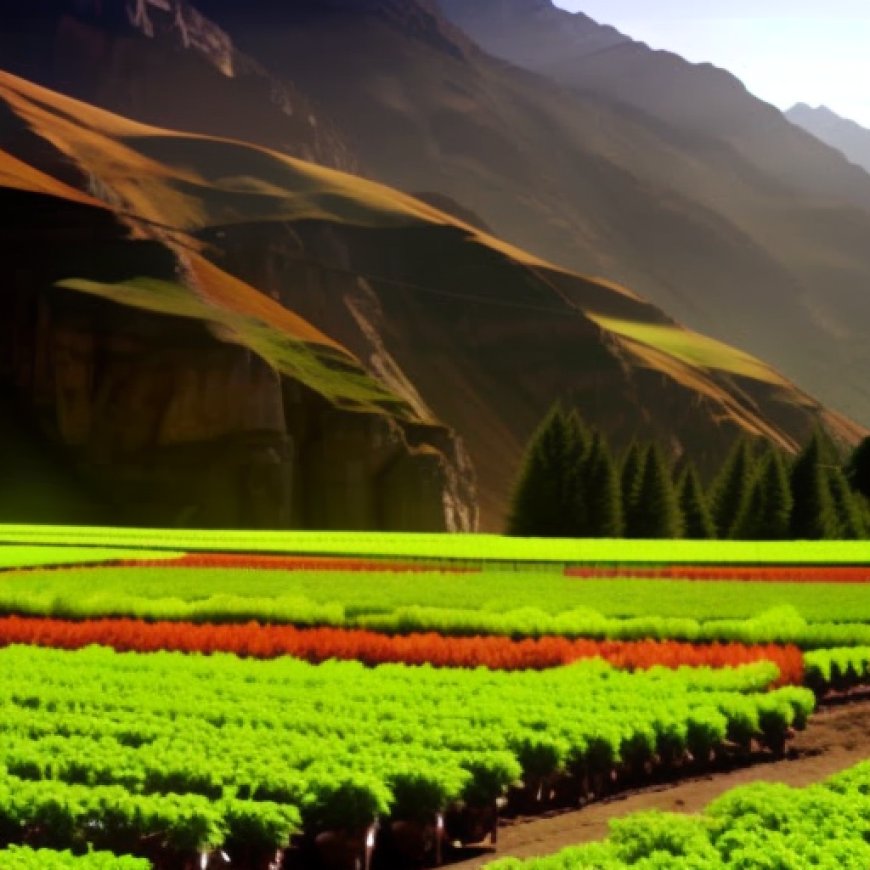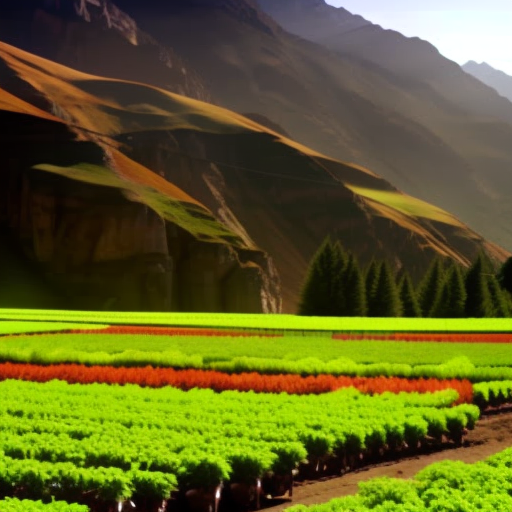Use of renewable energy could revolutionise agriculture in Hindu Kush Himalayas: experts
Use of renewable energy could revolutionise agriculture in Hindu Kush Himalayas: experts The Economic Times


Harnessing Renewable Energy for Food Security in the Hindu Kush Himalayas

Experts, including those from India, have highlighted the potential of harnessing renewable energy to revolutionize food security in the mountainous region of the Hindu Kush Himalayas. This was discussed at a regional conference titled “Advancing Productive Uses of Renewable Energy in Agriculture in the Hindu Kush Himalayas,” hosted by the International Centre for Integrated Mountain Development (ICOMOD) in collaboration with the Alternative Energy Promotion Centre, Nepal.
The conference was attended by over 100 participants, including development partners, civil society members, environmental experts, private sector representatives, and government officials from Bangladesh, Bhutan, India, Nepal, and Pakistan.
Risks to Food Security in the Hindu Kush Himalayas
The experts highlighted that rising temperatures are compounding the risks to food security in the mountains of the Hindu Kush Himalayas. Traditional irrigation methods and limited access to energy are hindering agricultural productivity in these high-altitude regions.
The Hindu Kush Himalayas span across Afghanistan, Bangladesh, Bhutan, China, India, Myanmar, Nepal, and Pakistan.
The Abundance of Clean Energy in the Region
Clean energy sources such as hydro, solar, biomass, and wind are abundant in the Hindu Kush Himalayas. With rising temperatures posing a threat to food security, experts argue that it is crucial for agriculture, which contributes one-fifth of the region’s gross domestic product, to embrace renewable energy sources. This transition can transform yields, enhance food security, and reduce reliance on polluting energy sources.
Potential Applications of Renewable Energy in Agriculture
During the conference, experts from India showcased the potential applications of renewable energy in agriculture. Dr. Nitin Goel presented a mechanism for using solar energy to install cold storage systems, which he developed in India. Prof. Abid Haleem demonstrated the relevance of Artificial Intelligence in agriculture, including weather forecasting and efficient pest control systems. Niraj Shrestha from Nepal gave a presentation on solar thermal applications in the country’s agriculture sector.
Exploring the Potential of Renewable Energy in Mountain Farming
The conference provided a platform for stakeholders to explore the potential of renewable energy sources in transforming mountain farming. Discussions focused on strategies for scaling up these solutions for mountain communities in the Hindu Kush Himalayas region.
In her keynote speech, Shabnam Shivakoti Aryal, Joint Secretary of the Ministry of Agriculture, emphasized the crucial role that renewable energy can play in enhancing productivity in the agriculture sector.
SDGs, Targets, and Indicators
1. SDGs Addressed or Connected to the Issues Highlighted in the Article
- SDG 2: Zero Hunger
- SDG 7: Affordable and Clean Energy
- SDG 9: Industry, Innovation, and Infrastructure
- SDG 13: Climate Action
The article highlights the issues of food security, traditional irrigation methods, limited access to energy, rising temperatures, and the potential of renewable energy in the Hindu Kush Himalayas. These issues are connected to the SDGs mentioned above.
2. Specific Targets Under Those SDGs Based on the Article’s Content
- SDG 2.3: By 2030, double the agricultural productivity and incomes of small-scale food producers, particularly women, indigenous peoples, family farmers, and fishers.
- SDG 7.2: By 2030, increase substantially the share of renewable energy in the global energy mix.
- SDG 9.4: By 2030, upgrade infrastructure and retrofit industries to make them sustainable, with increased resource-use efficiency and greater adoption of clean and environmentally sound technologies and industrial processes.
- SDG 13.2: Integrate climate change measures into national policies, strategies, and planning.
The article emphasizes the need to enhance agricultural productivity, transition to renewable energy sources, upgrade infrastructure for sustainable practices, and integrate climate change measures into policies and planning.
3. Indicators Mentioned or Implied in the Article to Measure Progress
- Percentage increase in agricultural productivity and incomes of small-scale food producers
- Share of renewable energy in the energy mix
- Number of infrastructure upgrades and industries retrofitted for sustainability
- Extent of integration of climate change measures into national policies and planning
The article suggests the need to measure the increase in agricultural productivity and incomes, the share of renewable energy, the number of infrastructure upgrades, and the extent of climate change integration to track progress towards the identified targets.
Table: SDGs, Targets, and Indicators
| SDGs | Targets | Indicators |
|---|---|---|
| SDG 2: Zero Hunger | Target 2.3: By 2030, double the agricultural productivity and incomes of small-scale food producers, particularly women, indigenous peoples, family farmers, and fishers. | Percentage increase in agricultural productivity and incomes of small-scale food producers. |
| SDG 7: Affordable and Clean Energy | Target 7.2: By 2030, increase substantially the share of renewable energy in the global energy mix. | Share of renewable energy in the energy mix. |
| SDG 9: Industry, Innovation, and Infrastructure | Target 9.4: By 2030, upgrade infrastructure and retrofit industries to make them sustainable, with increased resource-use efficiency and greater adoption of clean and environmentally sound technologies and industrial processes. | Number of infrastructure upgrades and industries retrofitted for sustainability. |
| SDG 13: Climate Action | Target 13.2: Integrate climate change measures into national policies, strategies, and planning. | Extent of integration of climate change measures into national policies and planning. |
Behold! This splendid article springs forth from the wellspring of knowledge, shaped by a wondrous proprietary AI technology that delved into a vast ocean of data, illuminating the path towards the Sustainable Development Goals. Remember that all rights are reserved by SDG Investors LLC, empowering us to champion progress together.
Source: m.economictimes.com

Join us, as fellow seekers of change, on a transformative journey at https://sdgtalks.ai/welcome, where you can become a member and actively contribute to shaping a brighter future.







